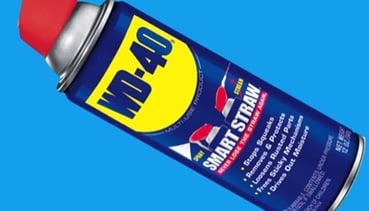Where friction in your customer experience occurs (and why you should care)
It’s easy to think that an organization-wide customer experience management initiative is complex, time consuming and expensive. And the truth is, it can be. But that doesn’t mean it’s not well worth it. The ROI on a better customer experience is significant, and the value is compelling.
And surprisingly, this value can be attained by any business, leveraging an age-old concept that’s really easy to understand and cost-effective to implement. It’s the concept of finding and reducing friction—anything that slows the customer down or makes it more difficult for them.
Friction occurs whenever a customer encounters resistance in the pursuit of their goals, wherever that may be. And almost every company has it somewhere in their customer experience.
Any place that the level of friction makes an interaction feel difficult for a customer, she can (and probably will) choose to leave. From the in-store experience to phone support or the ability to navigate your web site (and increasingly across all these channels in a single “omni-channel” transaction), today’s smart customers will quickly and effortlessly find an alternative if the experience doesn’t meet their increasingly high expectations.
As a result, one of the most important lessons for any company to learn is that friction of any kind consistently makes the customer experience more difficult. If you want to make your customers happier, you have to identify the friction points in their experience, and eliminate them. The good news is that reducing friction is one of the most effective ways of improving experience. The bad news is that it can be hard to spot where friction occurs—particularly if you don’t know how to look for it.
Improve your customer experience by reducing friction
When it comes to transactions with any company, customers want them to be handled without any hiccups or surprises. In other words, no friction. For both business and consumer buyers, the avoidance of friction is a key driver of vendor choice. In the language of customer experience, a frictionless experience is easy, enjoyable and very effective.
Amazon, for example, has succeeded in part because it does a miraculous job at finding and rooting out friction. From Amazon Prime to free shipping and 1-click ordering, many of its innovations are geared to the elimination of things that create friction. Sometimes, it's not even something we customers realize is friction until it’s removed. The result—for both Amazon and its customers—is a faster, easier and more efficient way of finding, buying and delivering goods.
Yet as common as friction is, it can be hard for a company to see the friction it’s creating. Broadly speaking, the best way to find it is to look through the eyes of your customers. We call this an “outside in” view of what it’s like to business with your company. Essentially walking a mile (or two) through the customer journey, and identifying all those points where an interaction isn’t as easy or enjoyable as it should be.
DIY friction removal: Following (and listening to) your customers
This method of improving the experience is something that any company at any stage of development can do. It’s also something that drives outsize returns. And it’s actually pretty easy. Put another way, the DIY approach to customer experience improvement is to take a hard look at all the little sources of friction that make it even a little bit more difficult for your customers.
Start at the beginning: how easy is it for customers to find you? Making this process just a little more efficient will result on more people discovering your company. Once they do, how quickly can they determine how what you offer is uniquely suited to their needs? Again, incremental improvements in this process directly drive more new customers, more quickly, through your company’s acquisition and sales funnel.
For example, working with an owner/operator of retail shopping malls, we found that allowing electronic acceptance of digital discount and special offer coupons drove greater purchase volume and amount from both loyal and new customers.
You can also find friction simply by asking your employees for hot spots and ideas on how to fix them. And as we here at McorpCX well know from daily work with our clients, something as seemingly simple as asking customers for their feedback following an interaction—and actually using this data to drive insights and actions—can be a game changer in the customer experience.
A bank we worked with found that customers regularly voiced complaints to tellers—but the complaint stopped right there, with a sympathetic ear. By putting a system in place that allowed tellers to communicate customer comments to others in the company, they were able to “close the loop” on even casual complaints in ways that eliminated dissatisfiers, opening the door to greater loyalty.
Less friction = happier, more loyal customers
Companies that reduce friction—or add a little WD-40 to the experience—are able to reduce cost, increase loyalty and purchase volume, and much more. By finding and eliminating those sticking points, issues and irritants one at a time, you’ll find that your customers are happier, more loyal and more likely to stick with you.

